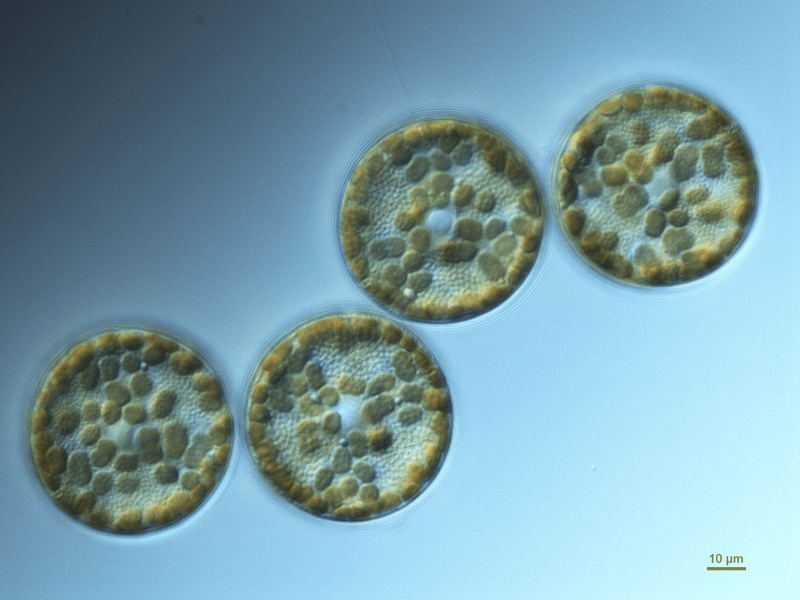Marine phytoplankton

King County has sampled phytoplankton since 2008. Marine phytoplankton samples are collected from 1 meter deep at 10 locations in the Puget Sound Central Basin two times a month February-November and once a month January and December, in addition to other water quality parameters.
A FlowCam instrument (combines elements of flow cytometry—a technique to count phytoplankton— and microscopy) is used to take photos, count, and analyze phytoplankton in the 10 to 300 micrometer (µm) size range down to the lowest practical taxonomic level (typically genus). This analysis uses a live (unpreserved) sample and provides measurements of abundance and biovolume for each taxon.
In addition, another live subsample is used to generate a list of all phytoplankton present in the sample identified to the species level whenever possible. For this analysis, the samples are examined immediately under a microscope.
More Information
The goals of this monitoring are to:
-
Catalog and count the phytoplankton present in the Central Basin of Puget Sound throughout the year.
-
Assess influences of large-scale and regional climate patterns on phytoplankton abundance and distribution on both short and long time scales.
-
Measure variability in community composition, size distribution, abundance, and biovolume over seasonal and interannual timescales as well as spatial variability.
-
Assess ecosystem and food web dynamics by analyzing data with other datasets (chemical, physical, and biological parameters).
-
Support regional efforts and collaborations such as the Puget Sound Ecosystem Monitoring Program (PSEMP) Marine Waters Workgroup.
Access Data
Download Data from our online database.
Contact MarineWQ@kingcounty.gov for phytoplankton microscopy (species presence/absence) data, and for information about the most recent quality control.
Note: some data may be provisional.
Documentation
Learn more about our program by reading documents such as the latest sampling and analysis plan and read relevant reports and presentations.
Contact us with any questions or access additional resources in the Science Section Library.

 Translate
Translate